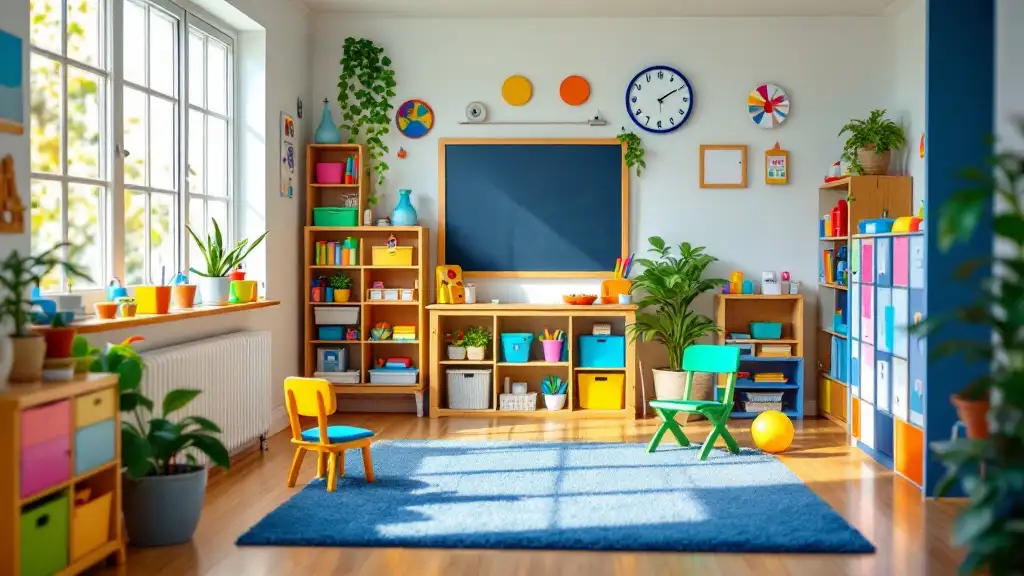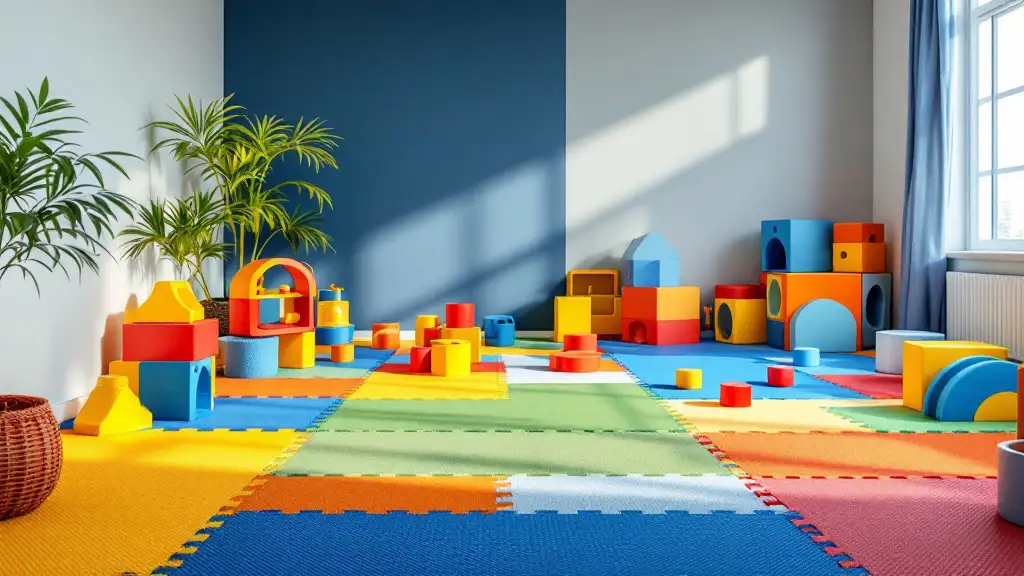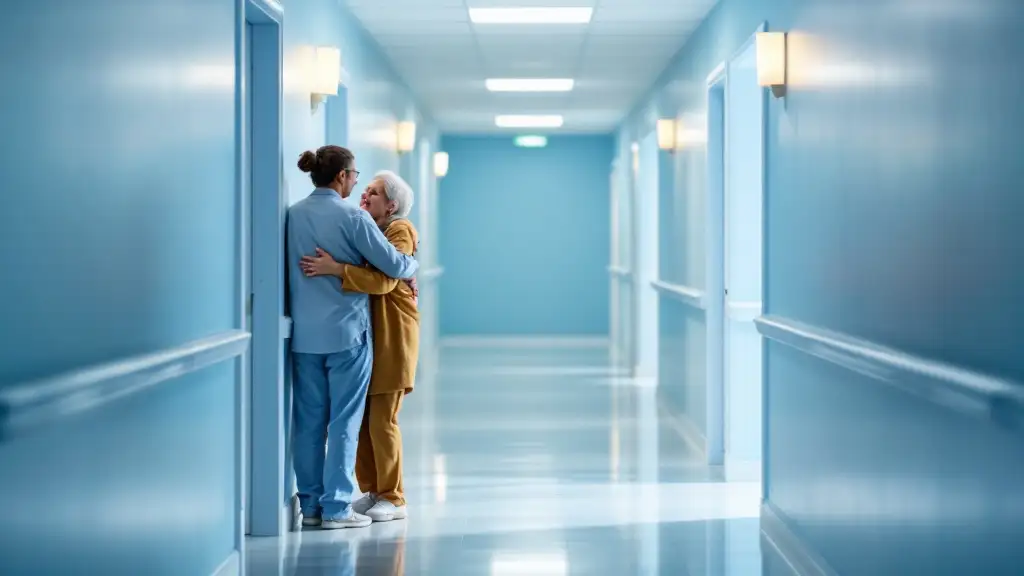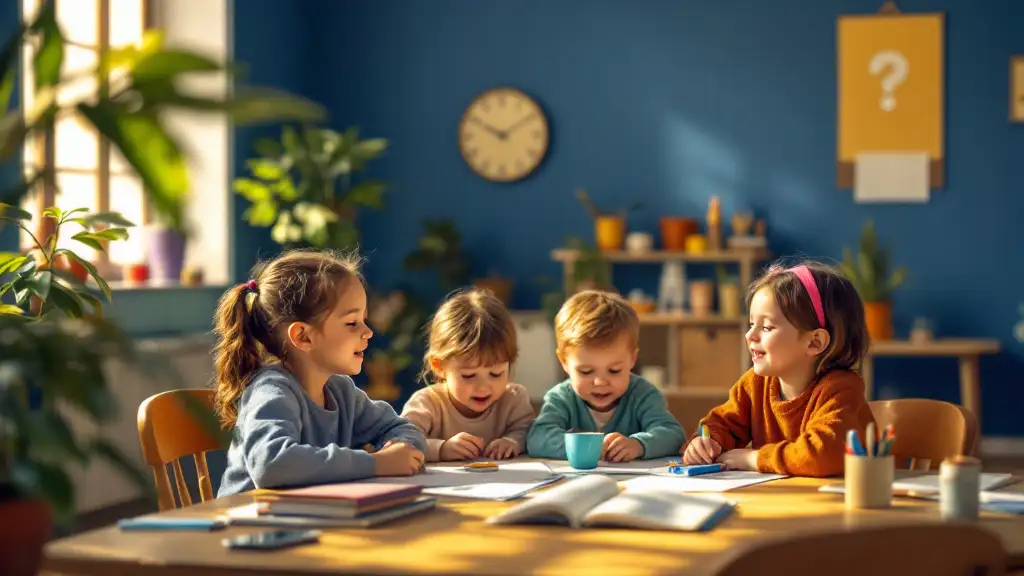
Understanding Balance and Coordination in Children
Balance and coordination are crucial motor skills that enable children to move confidently, participate fully in daily activities, and develop independence. These skills involve complex interactions between the brain, muscles, inner ear, eyes, and sensory systems. When children experience difficulties in maintaining balance or coordinating movements, it can significantly impact their development, safety, and social participation. Recognizing the signs early and understanding the causes pave the way for effective intervention through pediatric physical therapy.
What Causes Balance and Coordination Difficulties in Children
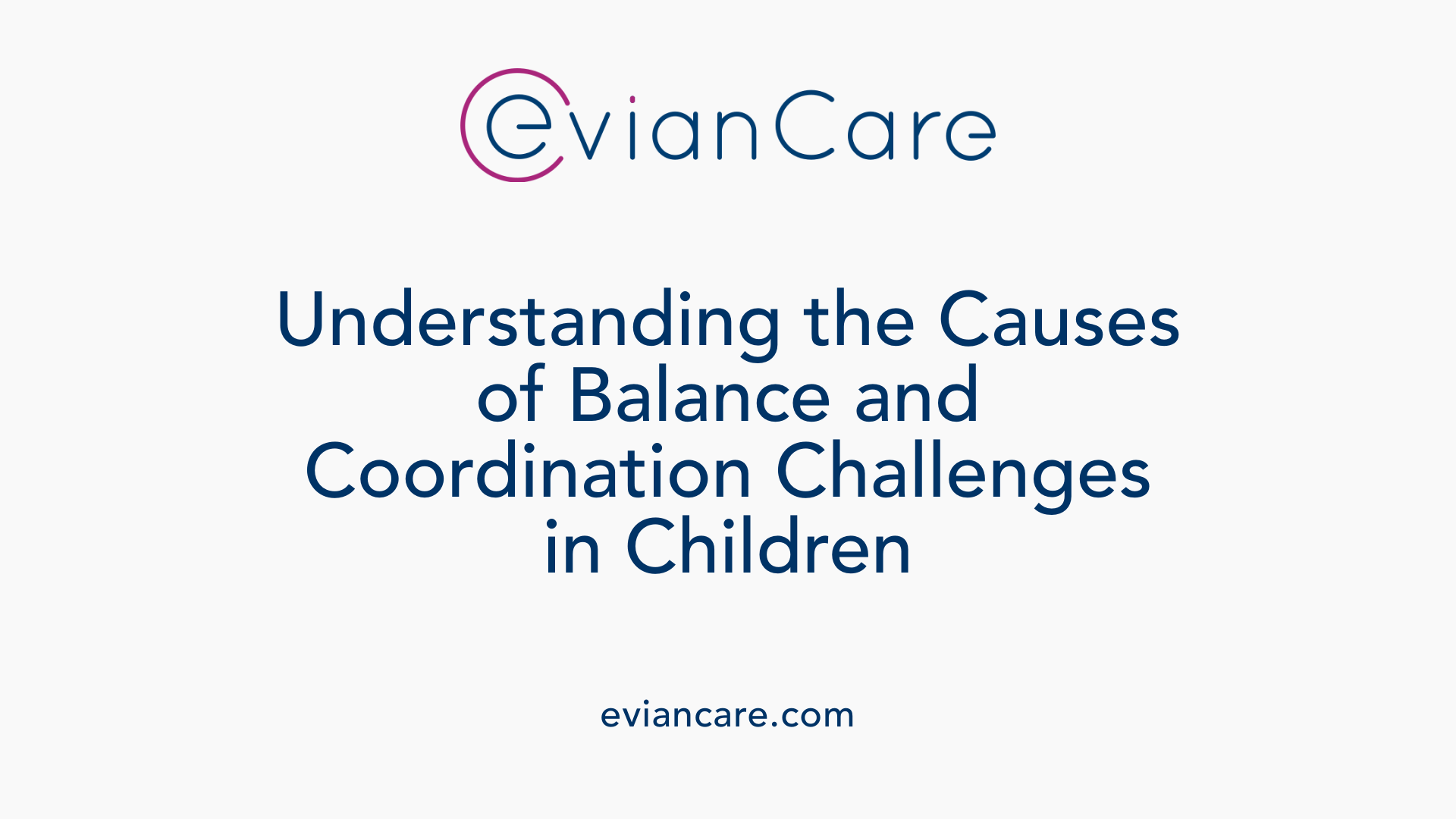 Balance and coordination are complex skills that involve multiple systems working together smoothly. When these skills are delayed or impaired, children may struggle with walking, running, or performing fine motor tasks. Several factors can contribute to these difficulties.
Balance and coordination are complex skills that involve multiple systems working together smoothly. When these skills are delayed or impaired, children may struggle with walking, running, or performing fine motor tasks. Several factors can contribute to these difficulties.
Neurological conditions affecting the brain and nervous system often impact motor control, muscle strength, and coordination. Conditions such as cerebral palsy, autism spectrum disorder, and Down syndrome are common examples where neurological impairments can hinder movement.
Developmental delays that affect reaching certain milestones—like crawling, sitting, or walking—can also lead to ongoing balance and coordination challenges. These delays may stem from genetic factors or environmental influences that interfere with typical development.
Sensory processing issues and problems within the vestibular system—the inner ear structures responsible for balance—play a significant role. Dysfunction in this system can cause dizziness, vertigo, or a sensation of spinning, making it difficult for a child to maintain steady movements.
Inner ear problems such as infections (e.g., middle ear infections) or vestibular disorders can also affect balance. These conditions impair the body's ability to detect spatial orientation, leading to unsteady gait and clumsiness.
Head injuries, medications, migraines, and genetic predispositions further influence a child's balance and coordination. For example, traumatic brain injuries can damage areas involved in motor planning, while certain medications might cause dizziness or muscle weakness.
Developmental coordination disorder, also known as dyspraxia, is a specific condition where children have difficulty planning and executing coordinated movements despite having normal muscle strength. These children often appear clumsy, have trouble with tasks like catching or riding a bike, and reach developmental milestones late.
Sensory integration issues, low muscle tone, and delayed neurodevelopment also contribute to poor balance. Without proper sensory input and muscle strength, children may have trouble maintaining posture and executing movements efficiently.
Early assessment by pediatric health professionals and tailored therapies—such as physical and occupational therapy—are crucial. They help identify the underlying causes and develop personalized strategies to improve motor skills, boost confidence, and prevent future setbacks.
Recognizing Symptoms and Signs of Balance and Coordination Problems
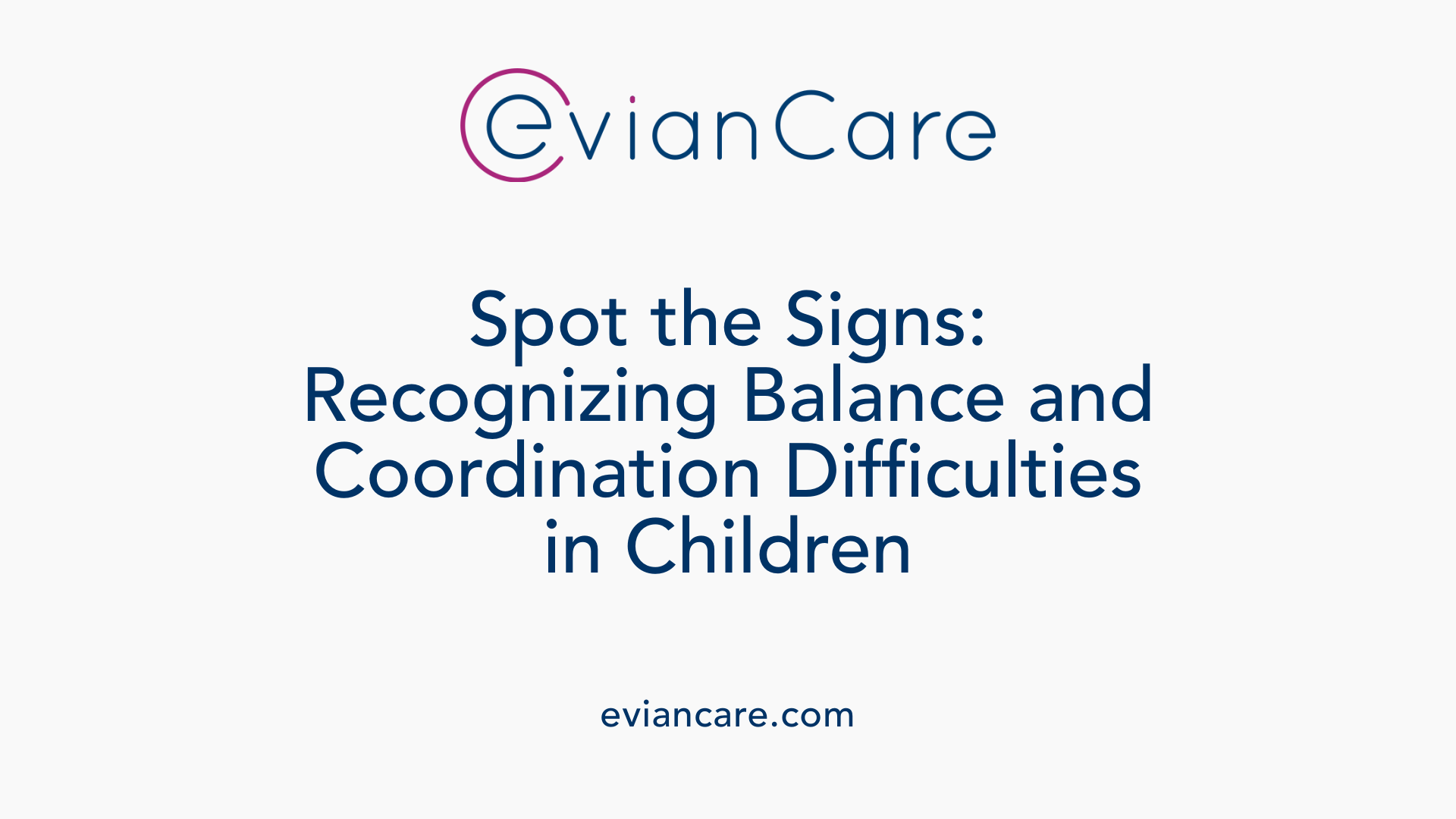
What are symptoms indicating balance and coordination problems in children?
Symptoms of balance and coordination difficulties can vary across different age groups, but some common signs include frequent falls, unsteady walking, and trouble maintaining balance while sitting or standing.
Children who struggle with these skills often appear clumsy, frequently bump into objects, or drop items accidentally. They may have difficulty with fine motor tasks such as writing, drawing, tying shoelaces, or using scissors, showing delayed development in these areas.
In addition, children might avoid physical activities or sports, indicating discomfort or lack of confidence in their movements. They may also find climbing stairs or maintaining proper posture challenging, often exhibiting stiff or overly exaggerated limb movements.
Some children experience sensations like dizziness or a spinning feeling, which can be signs of vestibular system issues. These symptoms can be coupled with delayed milestones like crawling, standing, or walking, especially in infants and toddlers.
Beyond physical signs, broader developmental concerns may include trouble with coordination tasks such as catching or throwing a ball, balancing on one foot, or riding a bike. These difficulties can sometimes be accompanied by behavioral signs, such as increased frustration during movement activities or reluctance to participate in play.
Underlying these symptoms are often neurological, sensory, or vestibular system problems, which can affect many aspects of motor development. Early identification of these signs allows for timely intervention, including pediatric physical therapy, to support motor skills, confidence, and overall development.
The Role of Physical Therapy in Enhancing Balance and Motor Skills
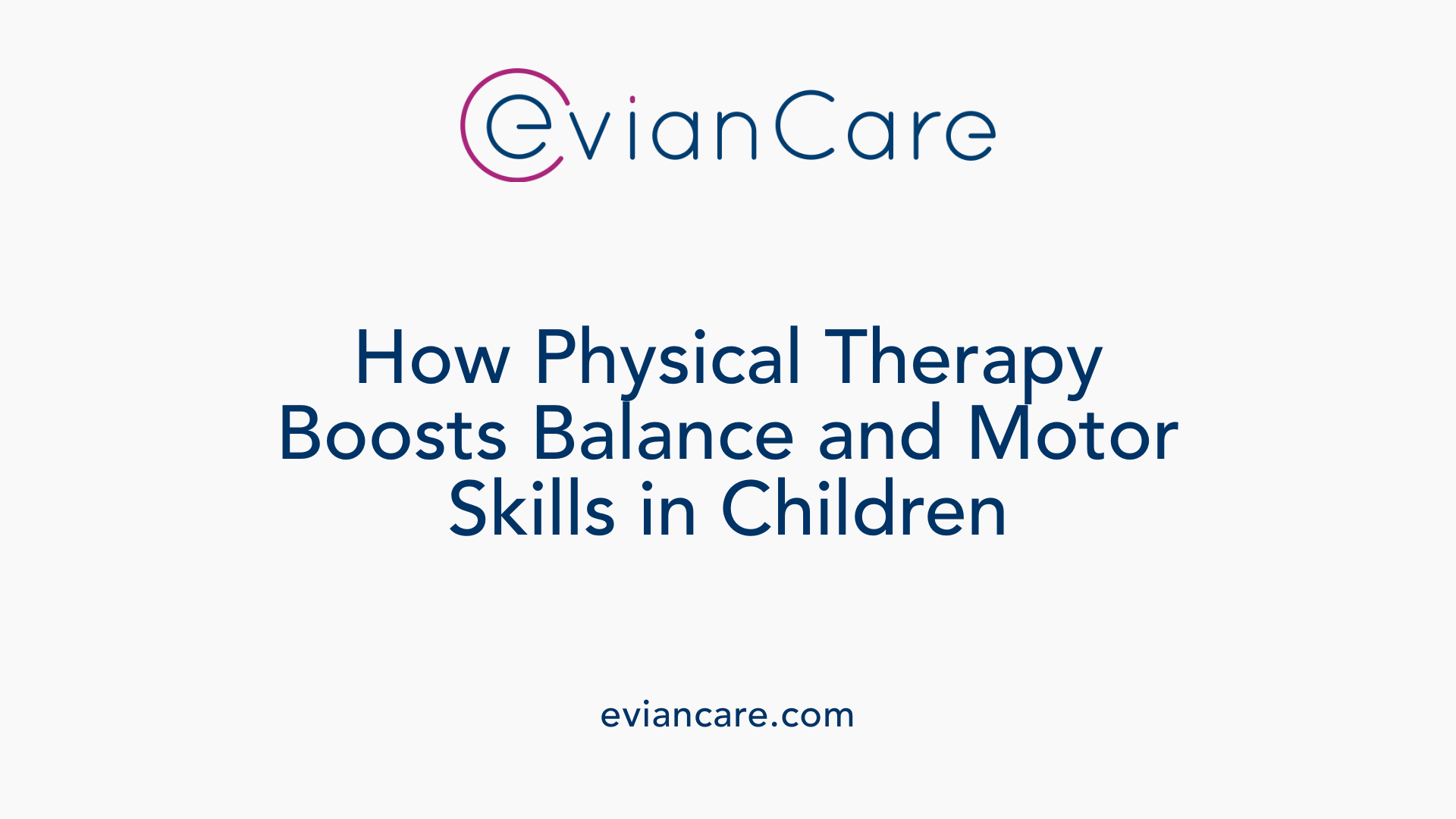 Physical therapy plays a vital role in helping children develop and improve their balance and coordination. A comprehensive assessment forms the foundation of effective therapy; therapists evaluate muscles, joints, the inner ear, eyes, and skin sensation to understand each child's unique needs.
Physical therapy plays a vital role in helping children develop and improve their balance and coordination. A comprehensive assessment forms the foundation of effective therapy; therapists evaluate muscles, joints, the inner ear, eyes, and skin sensation to understand each child's unique needs.
These evaluations inform the design of personalized treatment plans focused on enhancing strength, improving motor control, and addressing specific challenges. Common exercises include core strengthening, gait training, and balance activities that encourage stability and coordination.
Therapists incorporate playful, task-specific activities, such as obstacle courses and animal walks, which promote motor planning, muscle awareness, and functional movement skills. This approach not only improves physical abilities but also boosts confidence and independence.
Early intervention is crucial to prevent delays in motor milestones and reduce the risk of secondary complications like social withdrawal or limited activity. By tailoring exercises to individual needs, physical therapists help children build confidence in their movements, enhance their participation in daily activities, and develop skills necessary for sports and recreation.
Can physical therapy help children with balance and coordination issues? Yes, through tailored assessments and interventions, therapists improve balance by retraining multiple systems involved in equilibrium, including muscles, proprioception, vision, and the vestibular system.
Can physical therapy restore balance in children? Indeed, targeted therapy can restore and enhance balance. Techniques such as vestibular exercises and balance retraining help address underlying issues, improve sensory functioning, and prevent dizziness. Personalized programs often include exercises that strengthen muscles and retrain eye and head movements to boost stability. With consistent therapy, many children experience increased confidence, better mobility, and improved posture.
In summary, physical therapy is a safe and effective approach to developing children's balance and coordination skills. It involves thorough evaluations, customized treatments, fun exercises, and activities that support long-term motor development and reduce the risk of falls and injuries.
Effective Therapeutic Approaches and Activities
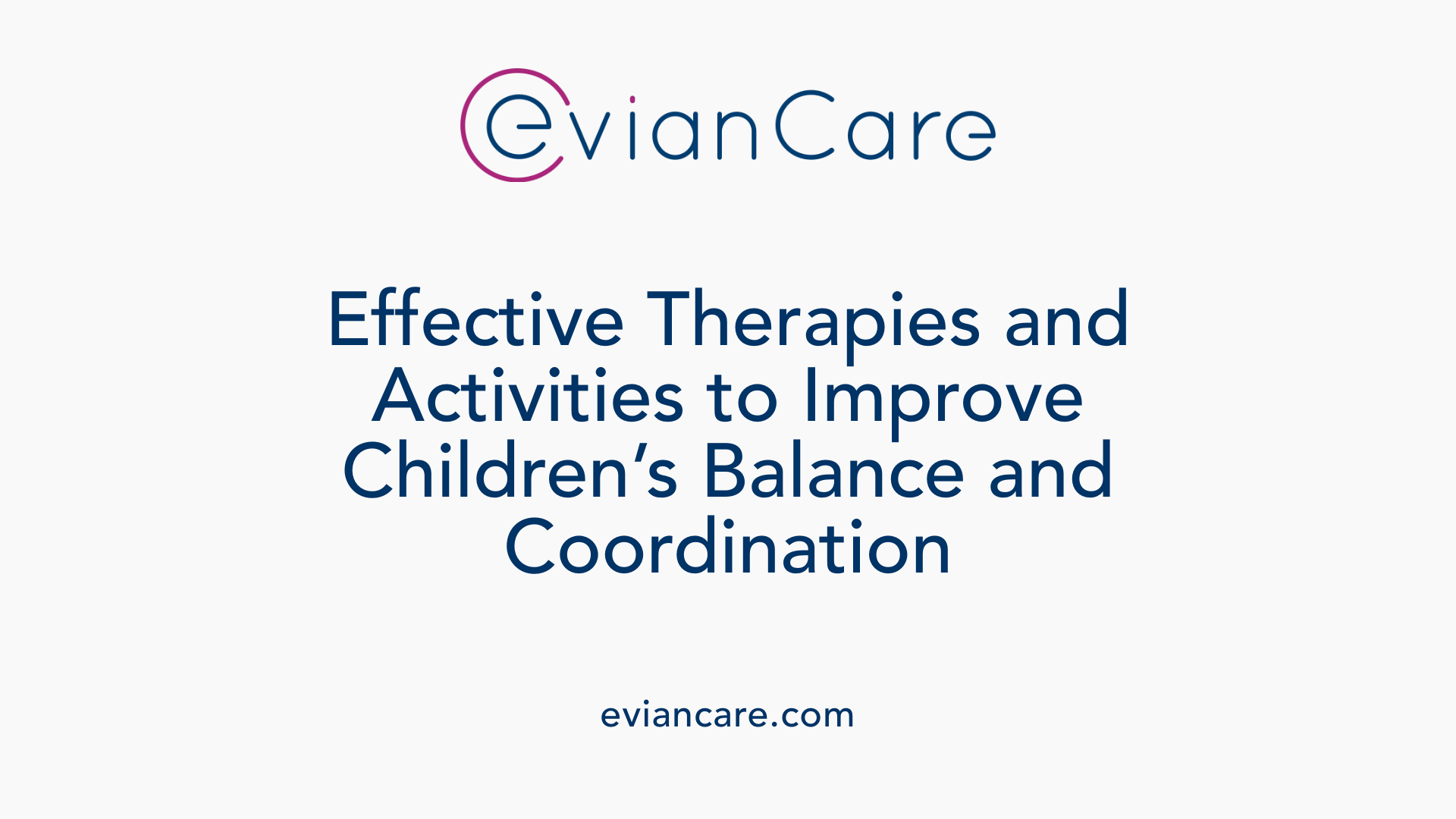 Various therapeutic methods are used to help children improve their balance and coordination, with vestibular rehabilitation therapy (VRT) standing out as a particularly effective approach. VRT involves customized exercises designed to enhance the child's ability to maintain stability, control gaze, and reduce dizziness caused by inner ear or vestibular system problems. These exercises include gaze stabilization, balance training, and habituation activities that train the brain to compensate for sensory deficits.
Various therapeutic methods are used to help children improve their balance and coordination, with vestibular rehabilitation therapy (VRT) standing out as a particularly effective approach. VRT involves customized exercises designed to enhance the child's ability to maintain stability, control gaze, and reduce dizziness caused by inner ear or vestibular system problems. These exercises include gaze stabilization, balance training, and habituation activities that train the brain to compensate for sensory deficits.
In addition to VRT, therapists incorporate core strengthening, gait training, and sensory integration exercises to support overall motor development. Strengthening core muscles is crucial for maintaining posture, while gait training helps children develop smooth and confident walking patterns.
Play-based activities are also vital. These include obstacle courses that challenge motor planning and coordination, balloon volleyball to develop hand-eye coordination, and animal walks—such as bear or crab walks—that enhance gross motor skills, balance, and core strength.
Balance equipment plays a role in therapy as well. Wobble boards and therapy balls are used to provide unstable surfaces that stimulate proprioception and improve steadiness. These tools are especially helpful because they allow children to practice balance in a fun and engaging way.
Tailoring activities to each child’s age and ability ensures effective skill development. For example, younger children benefit from simple games like hopscotch or freeze dance, which promote stability and motor coordination through playful movement. As children grow, more complex activities like yoga poses, standing on a balance beam, or cycling can further challenge their balance and coordination.
Overall, a mix of targeted exercises, engaging activities, and age-appropriate equipment helps children build confidence, prevent falls, and develop the motor skills necessary for everyday participation and sports.
Supporting Children and Parents Through Resources and Early Intervention
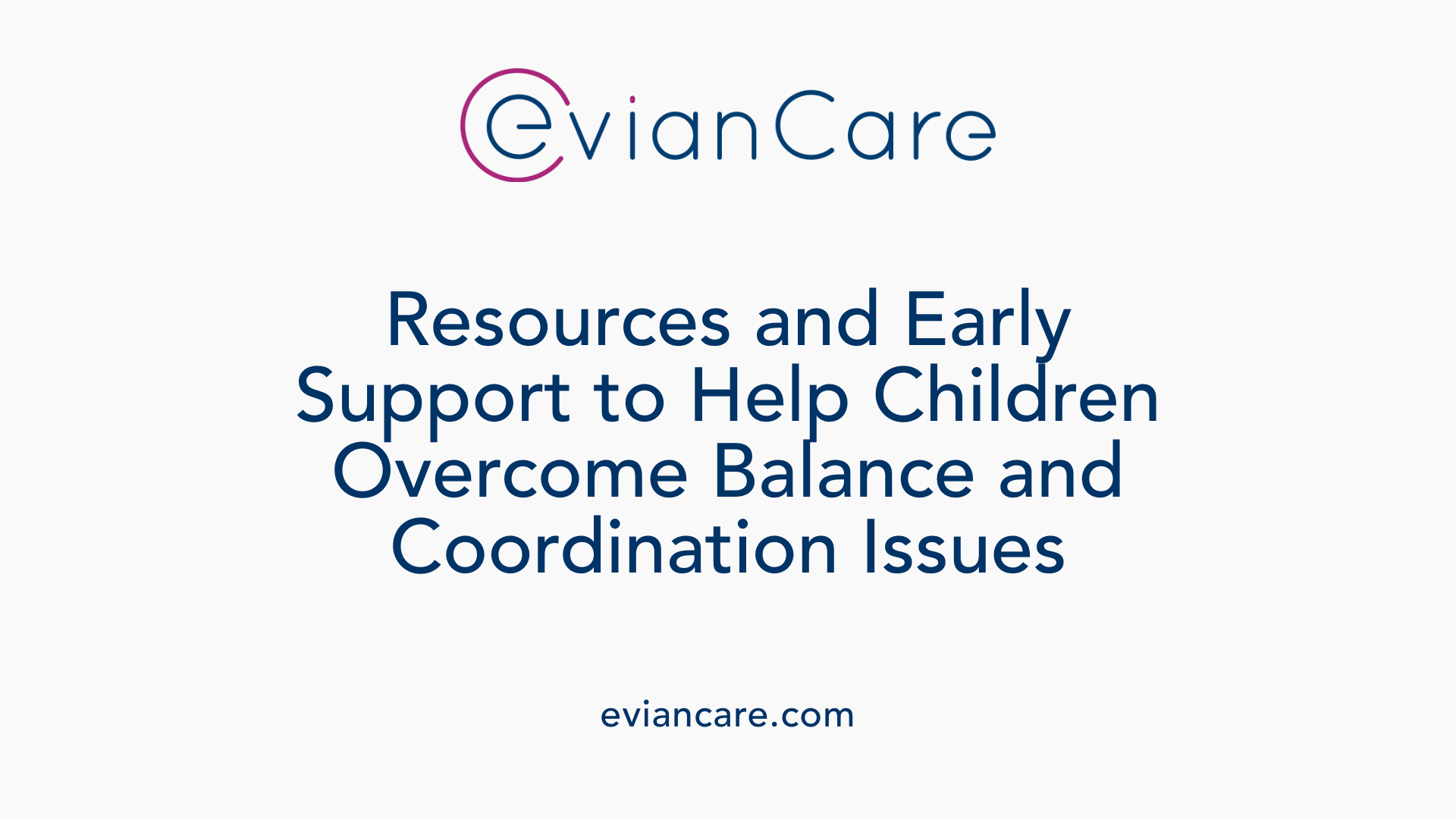
What resources are available to help parents support children with balance and coordination issues?
Parents seeking to assist children with balance and coordination challenges have access to a wide range of supportive resources. Consulting healthcare professionals—including pediatricians, occupational therapists, and physiotherapists—is a crucial first step. These specialists can evaluate a child's developmental progress, diagnose specific issues, and recommend personalized treatment plans.
In addition to professional guidance, educational materials such as books, workshops, and online programs are invaluable. These resources teach parents and caregivers practical strategies and activities to encourage motor skill development and enhance body awareness at home and in school settings.
Engaging children in play-based activities is another effective approach. Activities like climbing on equipment, balancing on beams or logs, and using interactive playground structures help develop strength, coordination, and confidence.
Occupational therapy often incorporates task-specific exercises, visual cues, and motor planning activities to support skill acquisition. Early assessment and intervention are essential to prevent delays, improve functional abilities, and foster independence.
Environmental modifications, such as accessible toys, supportive furniture, and adaptive tools, can also assist children in practicing new skills safely. Combining these resources with consistent support and encouragement can dramatically enhance a child's motor development.
Overall, a multidisciplinary approach involving healthcare professionals, educational resources, engaging activities, and tailored adaptations empowers children to improve their balance and coordination, promoting active participation in daily life and boosting self-esteem.
Emphasizing Early Support and Holistic Approach to Motor Development
Early intervention through pediatric physical therapy plays a vital role in helping children develop essential balance and coordination skills. By addressing underlying issues promptly, therapists can improve motor skills, foster confidence, and enhance overall quality of life. Combining therapeutic exercises, play-based activities, and environmental support ensures a comprehensive approach that adapts to each child's unique needs. Engaging families and caregivers in the process amplifies the benefits, creating a supportive environment where children can thrive physically, socially, and emotionally.
References
- Poor Balance & Coordination Therapy - Little Feet Therapy
- Balance & Coordination in Children: Signs, Therapy ... - PedsTeam
- Overcoming Balance Challenges with Pediatric Physical Therapy
- Physical Therapy Guide to Developmental Coordination Disorder
- Balance Difficulties in Children - Progressive Pediatric Therapy
- Balance & Coordination - Kid Sense Child Development
- Improve Balance and Coordination for Children

